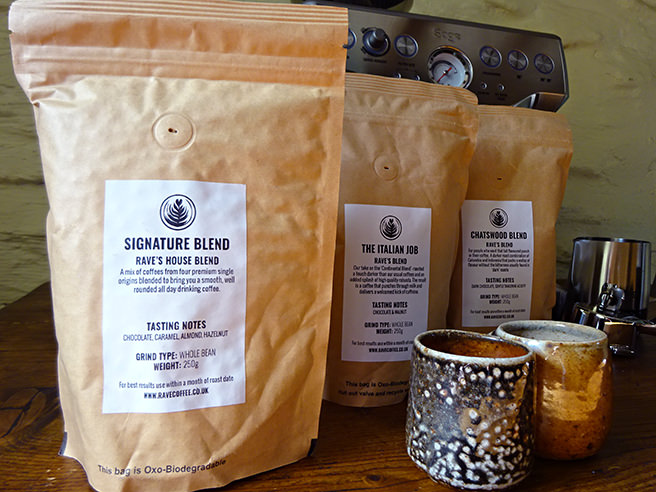
Regular readers will know that we enjoy a cup or two (or three!) of real coffee every day. That’s why we were really up for trying the subscription service from the newly formed company, Barista Box.

The Brighton-based brand teamed up with their favourite local coffee shop, Blend & Brew, who supply their coffee. In addition, Barista Box also donate to local causes:
Barista Box has formed a charity partnership with two The Trussell Trust Foodbanks. Our pledge is to donate a 1-litre carton of long-life milk, or non-dairy equivalent, for every order that we fulfil. So for every monthly coffee subscription order, every coffee gift box and any other products we might sell in the future we shall donate long-life milk to one of these foodbanks
They have a number of different options on offer; tasting boxes, gift sets, regular subscriptions and one off purchases. Our ‘Little Taster’ box comprised 2 resealable pouches of coffee (1 x Libertine + 1 x Blend & Brew), blue plastic coffee scoop, glass espresso measure and battery-operated milk frother.

As we have a bean-to-cup coffee machine, we requested bags of beans in our bundle. However if you have a filter coffee machine, moka pot or cafetière (the latter which they can supply), you can choose from their 3 textures of ready-ground coffee.

Usually, I like a flat white with soya milk. However, as I was trying out a new coffee, I made a double espresso with the medium-roast Libertine beans so I could enjoy it in its pure form. The taste was very smooth and mellow – no bitterness at all – very enjoyable with a couple of chocolate digestives!

The espresso measure that was supplied is just the right height and width for fitting under the portafilter of our coffee machine.

The second pouch of beans, the Blend & Brew type, were also medium-roast. It has a little more earthy flavour with a touch of chocolate flavour. This time, I enjoyed my soya flat white with a late-afternoon croissant.

Many thanks to Alexandra from Barista Box for supplying us with our Little Taster coffee box.
**Use our special discount code H4H12 for 12% off any gift box, (valid until 4th September 2021)**

















